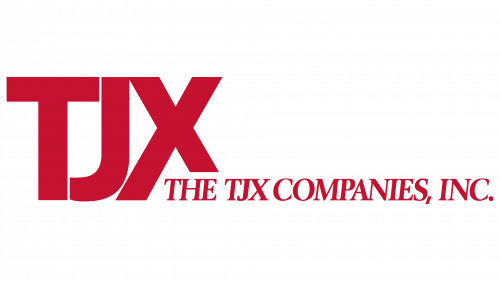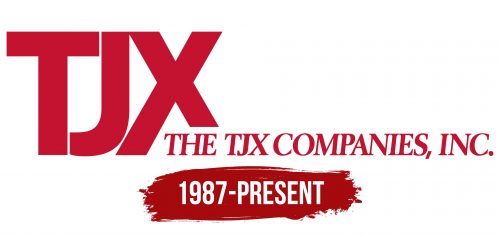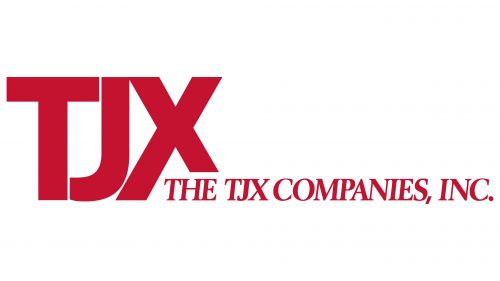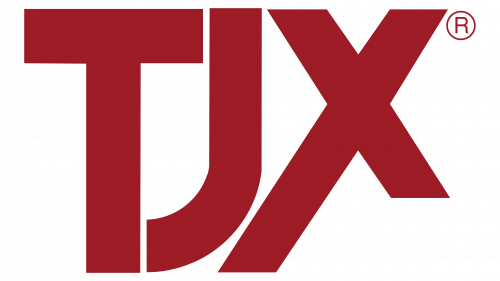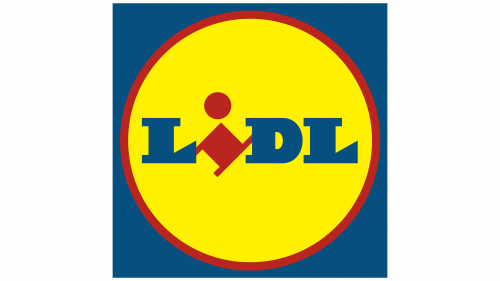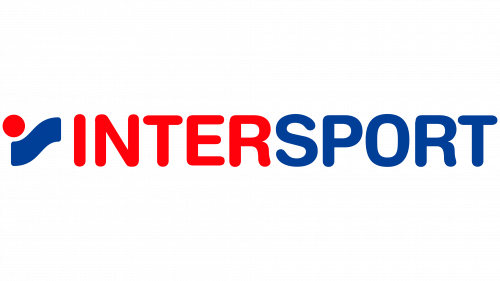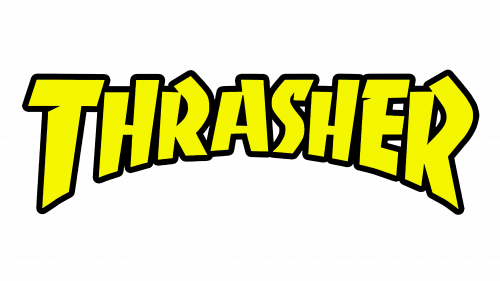The TJX logo has been one of the key factors in the success of the discount store chain, which now has over 4,550 locations. The simple yet memorable symbol has remained unchanged since its inception and continues to attract new customers.
TJX: Brand overview
The first two TJ Maxx stores opened in Auburn and Worcester, Massachusetts, in 1977, marking the beginning of TJX Companies’ existence. The discount department store chain Zayre Corporation, which was looking into new business expansion opportunities, formed these stores as subsidiaries.
The original idea was to sell name-brand apparel and household goods at a discount. Customers immediately took to this concept, and the business expanded quickly in the following years.
The company kept expanding in the 1980s, adding new locations nationwide. Due to the concept’s popularity, Zayre Corporation expanded its off-price retail portfolio in 1985 by acquiring Hit or Miss, another cheap clothing brand.
The year 1988 was a watershed in the business’s history. Zayre Corporation decided to establish a distinct business entity for its prosperous off-price retail venture. Consequently, TJX Companies, Inc. was established by combining Hit or Miss with TJ Maxx. The enterprise went public that year and listed its shares on the New York Stock Exchange.
In 1990, the firm acquired the Canadian discount apparel brand Winners Apparel Ltd., a significant move that commenced the company’s international expansion.
A new brand called HomeGoods, which specializes in cheap home goods, was introduced in 1992. The organization expanded its customer base and diversified its business line by taking this action.
The company debuted in the European market in 1994 when it opened its first TK Maxx location in Bristol, UK. “TK” replaced “TJ” as the new name to prevent confusion with an already-existing British chain.
1995 was a major year of growth for the firm when it purchased Marshalls, one of its primary rivals in the US off-price retail market. The acquisition had a major impact on the company’s market position.
The organization introduced A.J. Wright, a new network of stores targeted at lower-class consumers, in 2001. However, because this project was unsuccessful, the firm discontinued this brand in 2011.
The entity entered the Irish market in 2004 under the TK Maxx brand. In 2007, it expanded its home goods footprint in Canada by opening its first HomeSense shop.
The enterprise responded to the growing trend of online shopping by launching TJMaxx.com, an online retailer, in 2009.
2015, the organization purchased and rebranded the Trade Secret retail chain to enter the Australian market under the TK Maxx brand. This marked the beginning of the firm’s ongoing global expansion.
The company offered a wider selection of home items than those found in HomeGoods stores when it introduced Homesense as a new brand in the US in 2017.
In 2018, the first T.K. Maxx stores opened in Australia as part of the company’s expansion strategy. This was a big step for the firm’s global expansion, enabling it to expand internationally and reach a new continent. Alongside the store openings in Australia, the business model was modified to consider the local environment and customer preferences.
For the organization, 2019 was a year of considerable e-commerce growth—the business invested in improving its web properties, especially the tjmaxx.com website. As a result, the firm was able to keep the “treasure hunt” concept that sets its offline stores apart while bolstering its online presence and providing customers with a more comfortable online shopping experience.
For the organization, 2021 was a year of supply chain management advances. The business adopted new technology to enhance inventory optimization and demand forecasting, enabling it to react more skillfully to consumer preferences and market dynamics shifts.
In 2022, the company increased its market share in Europe by establishing new T.K. Maxx locations in several Eastern European nations. This expansion was part of a long-term plan to diversify its revenue streams and grow its market share abroad.
In 2023, the entity introduced a new store concept that catered to a younger demographic. These stores featured modern architecture, a wider selection of goods from well-known brands, and digital technology to improve the shopping experience.
Meaning and History
What is TJX?
It is an American multinational corporation that operates various retail stores offering a range of merchandise at discounted prices. The company’s brands include T.J. Maxx, Marshalls, HomeGoods, Sierra, and Homesense. TJX stores are known for selling clothing, shoes, home décor, furniture, and beauty products at significantly lower prices than traditional retail stores. The brand offers customers branded merchandise at bargain prices through unique purchasing and distribution strategies. The company has a significant presence in North America, Europe, and Australia, making it one of the largest retailers in the world.
1987 – today
The company took a professional approach to its visual identity, giving it significant attention. It aimed for the TJX emblem to be cohesive, with elements complementing each other and effectively fulfilling a marketing function. A key criterion was the harmonious integration of form and color, clearly representing a unified idea. Another important aspect was ensuring the logo’s visibility on digital screens and physical signage, given that the corporation operates brick-and-mortar and online stores.
- Color: The retailer approached color selection with great care. They chose a dark shade from the red palette, between carmine and crimson. Some believe this color stimulates the cardiovascular system and can improve mood.
- Font: The designers used a strict style to convey reliability, durability, and the retail chain’s businesslike approach. The smooth, uppercase letters catch the eye from a distance, whether people are driving or walking by the stores. This underscores the logo’s undeniable effectiveness.
- Form: The emblem has a simple structure based on a wordmark. The designers turned the name into a graphic object using a well-chosen font. As a result, the TJX logo looks like a textual logo but contains graphic elements—such as the shortened leg of the “X” and the combination of the abbreviation with the full company name.
Three glyphs form the foundation of the visual identity. They are capitalized, block-like, monolithic, and stand out from the rest of the text. However, they have an entirely simple structure: no serifs or curves, reflecting the confidence of TJX. This instills a sense of consumer reliability and demonstrates the company’s stability in the commercial space. This appeals to customers, as they see a retail chain maintaining a strong position while offering goods at affordable prices.
The large abbreviation on a sign or billboard grabs attention, the missing segment of the “X” adds intrigue, and the smaller text line sparks curiosity. This mechanism of visual impact on potential buyers works effectively, as evidenced by the retailer’s thousands of stores and its decision to keep the emblem unchanged.
The letters are spaced minimally apart, with one spot where they are connected. The white gaps are so small that there’s no room for graphic elements. There’s a certain paradox: one might assume the close letter spacing would reduce readability, but that’s not true. The text remains visible even from a distance, and the density of the glyphs doesn’t affect legibility.
The TJX logo includes the retail chain’s full name and abbreviation. It starts below the shortened stroke of the “X.” This gives the emblem originality and dynamism, as it contains a burst of energy: the lower text seems to break out from the shorter abbreviation, pushing forward. The slight slant of the letters, specifically used to convey movement, enhances this effect.
